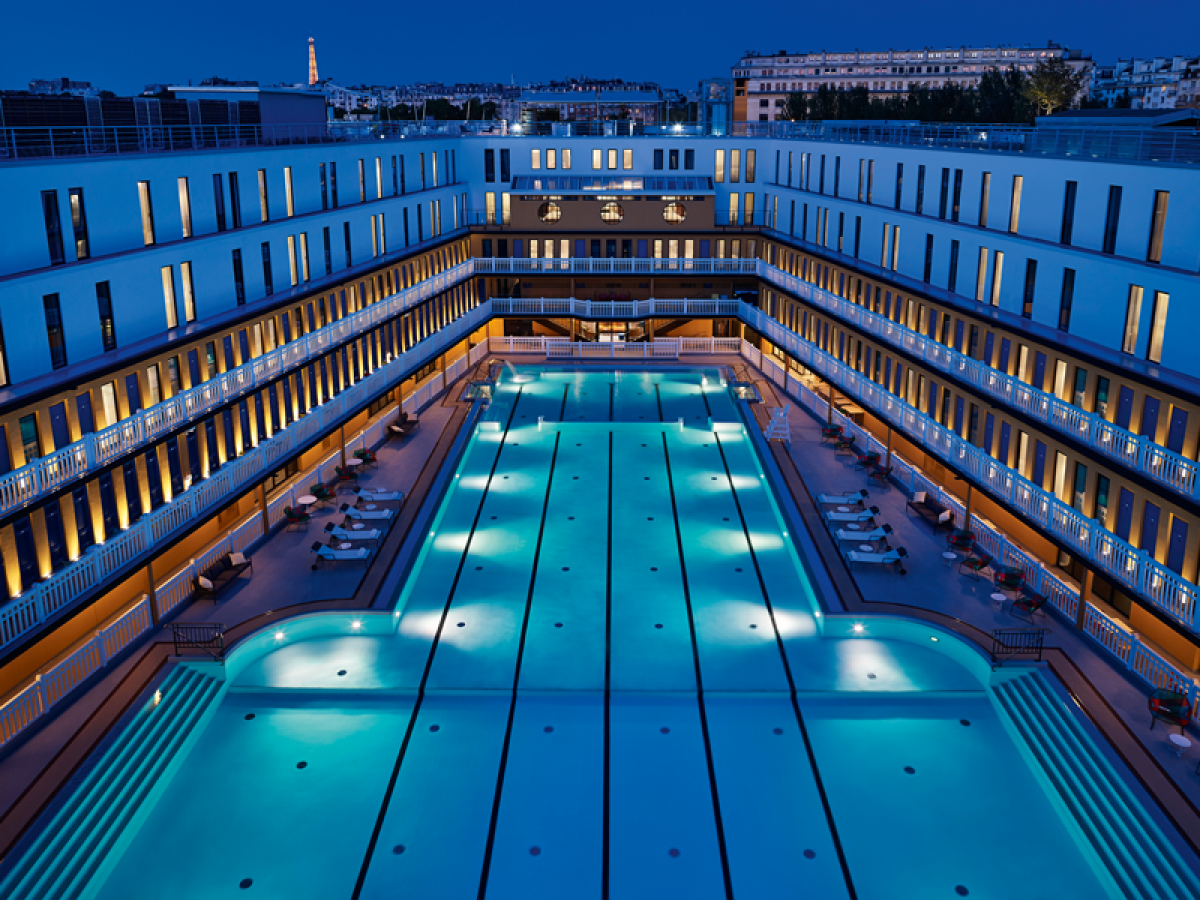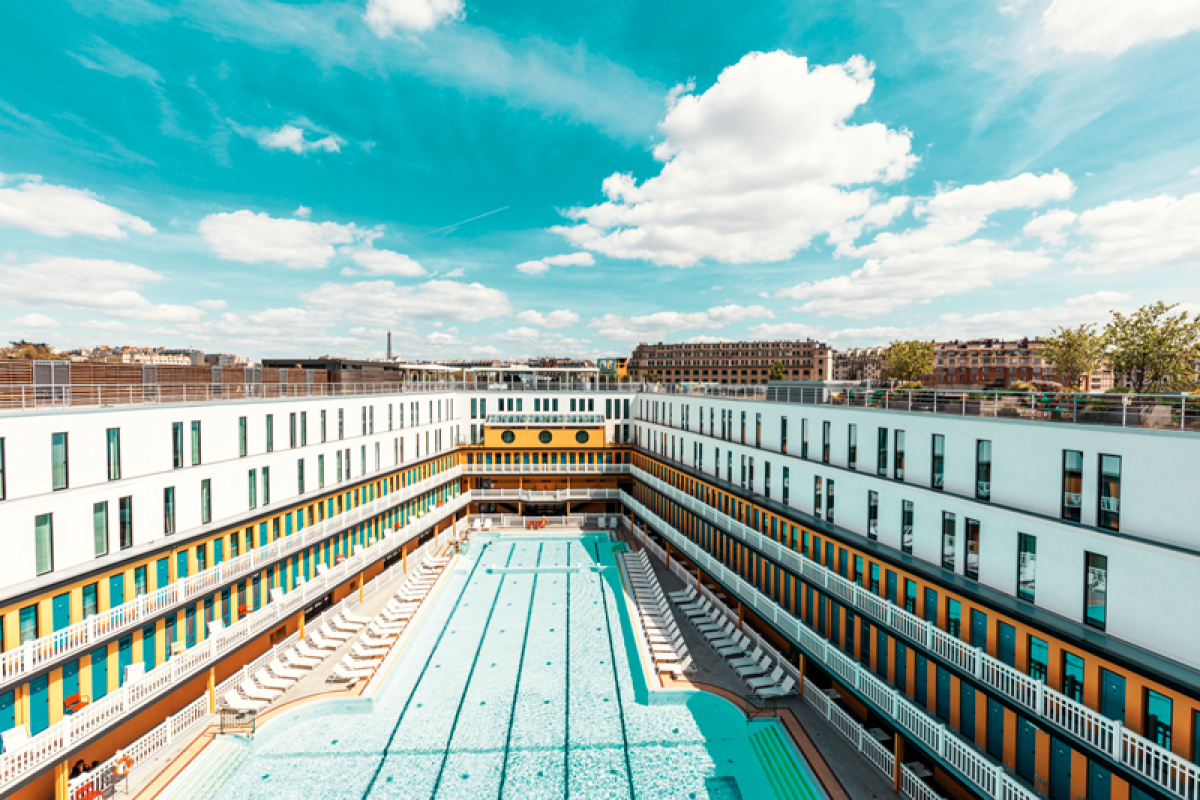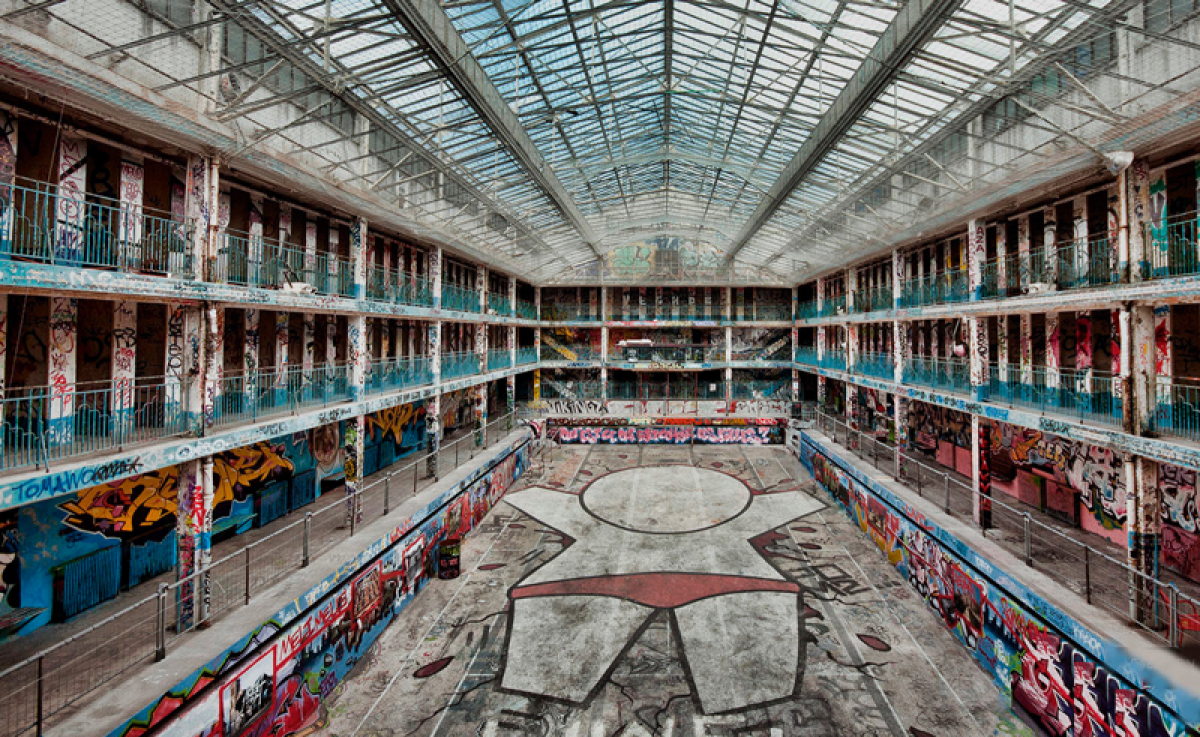



The formerly famous Molitor pool in Paris has been transformed into a luxury hotel with a focus on art.
by Kalina Konstantinova / photos Sebastien Giraud, Marc Plantec, Fanny Flory, Ludiwg Frave
The story of the Molitor pool in Paris began in the 1930s, but the spotlight recently turned back on it in the third season of the Emily In Paris series. There, two friends, Emily (Lily Collins) and Mindy (Ashley Park), spend a lovely sunny afternoon sipping cocktails against the backdrop of the iconic patio enclosing the outdoor pool. And though every nook and cranny Emily approaches in Paris becomes the place to be, Molitor definitely doesn't need the world-famous series to advertise itself. It opened in 1929 as a complex with indoor and outdoor pools. The idea was to provide a place for Parisians to play sports as part of an extensive campaign to raise sports culture. The project was realised by architect Lucien Paulet and is notable for its charming art deco details and Louis Barillier's stained glass windows. The design was inspired by ocean liners and architecturally, Paulet was influenced by Robert Mallet-Stevens.
Present at the opening was Johnny Weissmuller, five-time Olympic swimming champion and later famous for his film roles as Tarzan, who was also a lifeguard throughout the summer of 1929.
Special events began to be organised here, galas, the Water Festival, which honoured the most beautiful swimmer each summer... In 1946 Louis Reard, an automobile engineer and fashion designer, presented the new swimsuit - the bikini - to the media. The model Micheline Bernardini received 50,000 letters from enthusiastic fans after the event.
In winter, the outdoor pool was transformed into a winter ice rink, so the venue attracted visitors all year round. Children, adults, schoolchildren, mannequins, actors - a motley audience filled the spaces with raucous activity for many years.
But like any fashion spot, Molitor is slowly fading away. In the 1970s, due to lower interest, the winter rink was not opened, the water filtration system was breaking down, the concrete was being destroyed by chlorine, and the roof of the indoor pool was also due for repair. In 1989, management provided the keys to City Hall in perpetuity. But since such a vacant space in Paris cannot remain unoccupied for long, avant-garde graffiti artists begin to appear here and find a rather unconventional, perfect place in which to present their art.
Molitor is transformed into the home of street art, there is hardly a surface that is not covered in graffiti. Many photographers immortalized the ephemeral murals of Reso, Shaka, Katre, Kashink, Jace, Kouka, Nosbé from that time. However, the construction is crumbling more and more. A solution for its future had to be found. The complex was declared a monument and the town hall organised a competition for its renovation. The winning project was a luxury hotel that promised to restore the building to its original appearance and to respect and restore the splendour of its history. The condition of the structure was extremely poor and had to be almost completely demolished. It was rebuilt following the architectural plans of Lucien Paulet, getting as close as possible to the authentic atmosphere. Four architectural teams are involved in the renovation. The decoration of the interior spaces was entrusted to Jean-Philippe Newell, who offers a real journey through the eras from the golden years to today through art. Old photographs, frescoes, stained glass draw us into a circle of memories...
But street art continues to have the strongest connection with Molitor. The hotel's cultural programme places this art on a pedestal. The space of the covered pool is extremely interesting, where the old changing rooms that surround it have been painted by a different street artist. Visitors are thus able to discover the diversity of this kind of artistic expression in as many as 78 booths.
Inside the hotel, nearly 100 murals by contemporary artists cover the walls. Temporary exhibitions, installations and happenings constantly enliven the place. In each of the hotel's 117 rooms and 7 suites, guests can find a unique piece of art and if they like it, they can buy it.
The pools, unfortunately, are only accessible to hotel guests or members, but anyone can visit the hotel, view the current exhibition and soak up the truly special atmosphere of another Parisian place charged with so much passion and history.